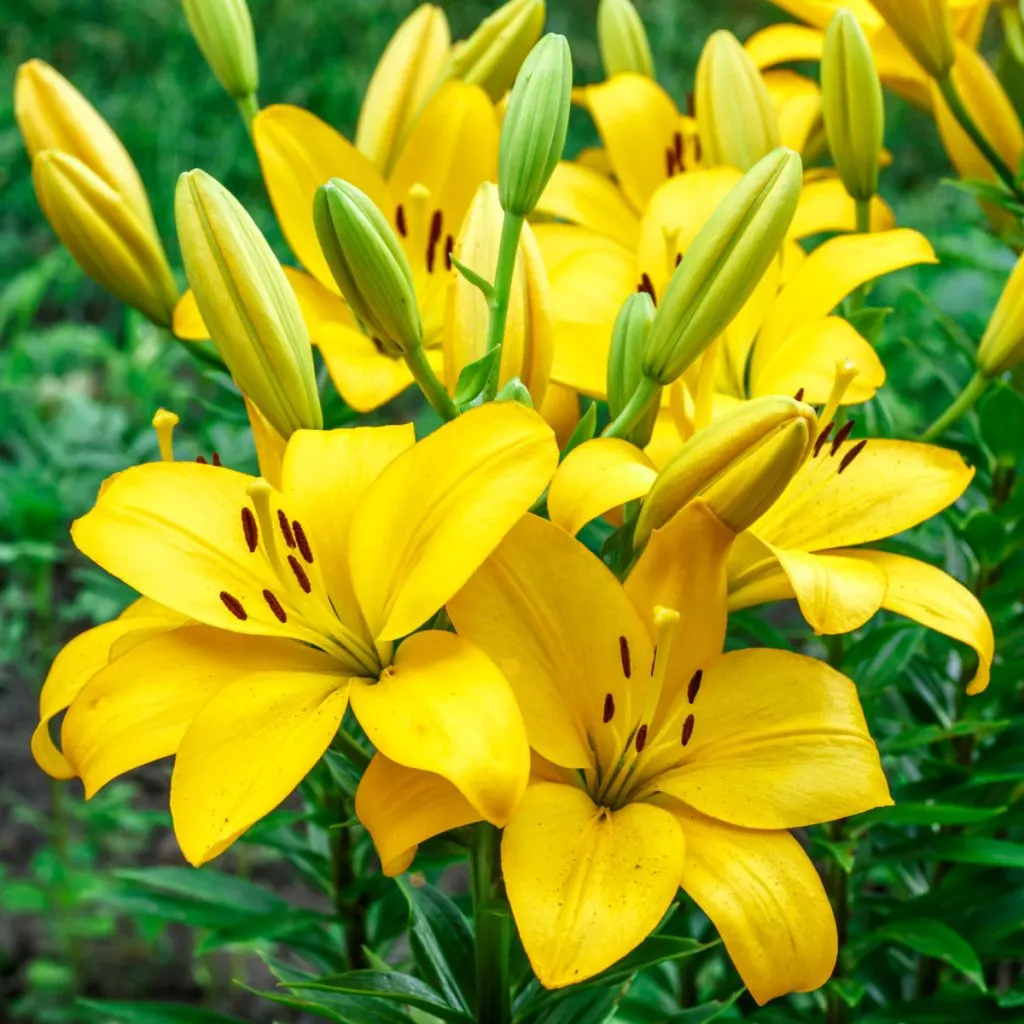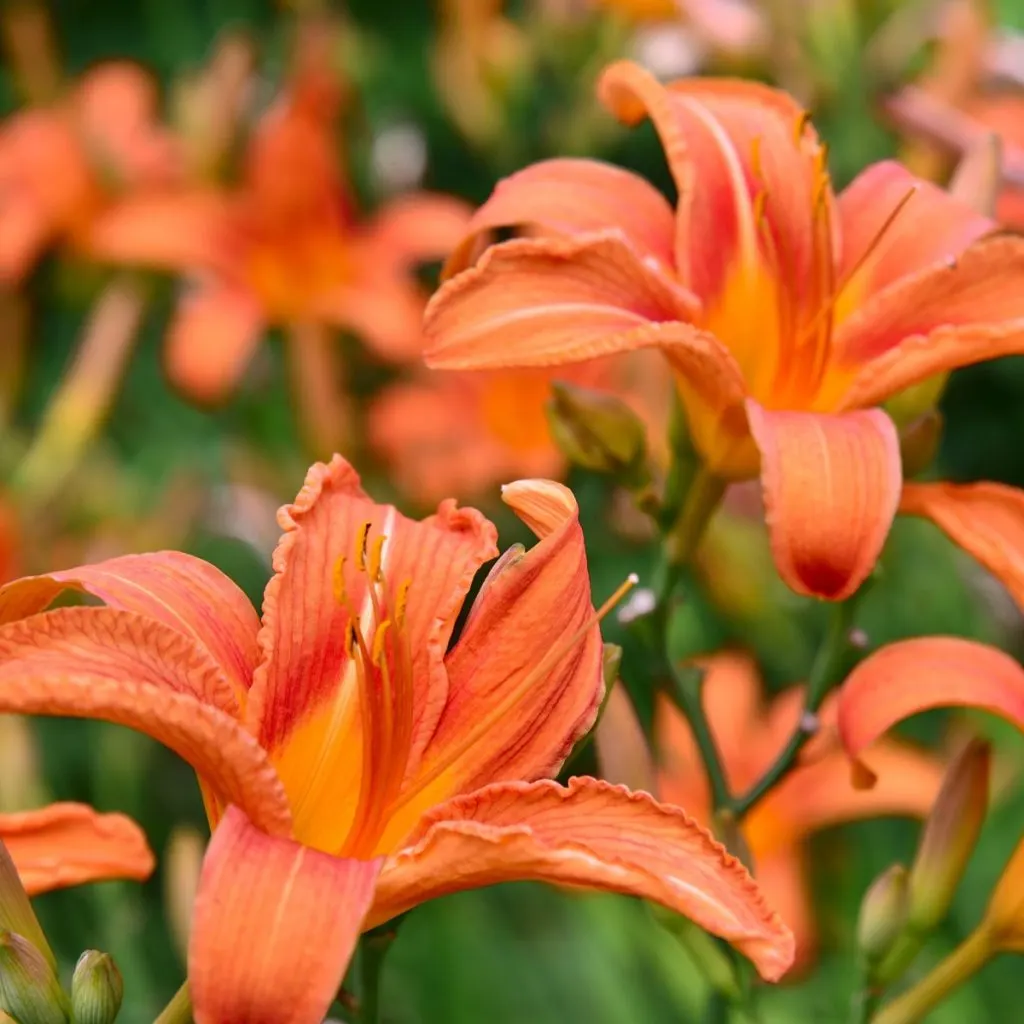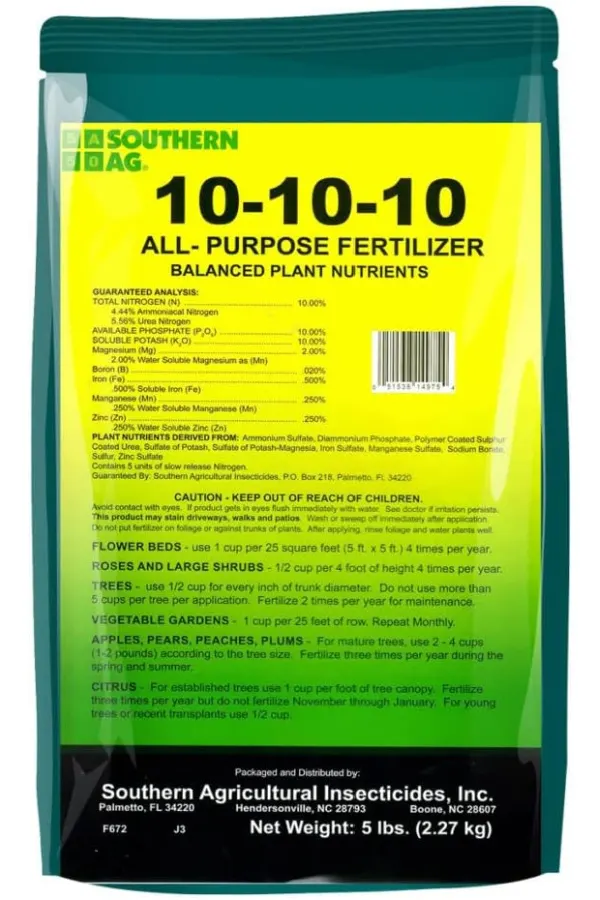Did you know that one of the best ways to get your daylilies to bloom bigger than ever is to give them the perfect dose of fertilizer in the spring?
Daylilies are one of the hardiest perennial plants around. Not only can they handle harsh winters, drought, and overly hot conditions with little trouble, they also rarely fall victim to pests. That, of course, is exactly why these powerhouse perennials are so popular in home landscapes.
But even though daylilies are a tough, low-maintenance plant, it doesn’t mean they can’t benefit from a little fertilizer. Especially when it comes to getting them to set more blooms and produce more flowers!

In general, daylilies are not a perennial that requires a high nutrient level from the soil. In fact, they can actually adapt to a wide range of soil types without issue. But when it comes to producing blooms, by simply giving them the right dose of nutrients in the spring, you can help them power up for a bigger and better set of blooms during the growing season.
The good news is that giving them that dose of nutrients couldn’t be easier!
How To Fertilize Daylilies In The Spring
The best time to fertilize daylilies is just before or as they are beginning to come through the soil. By giving them energy at this point, the plant uses it to store power for blooming. Unfortunately, if you fertilize right before or as it is starting to flower – the nutrients will only be used for growth – not blooms.
Before fertilizing in the spring, there are a few simple things to do for your daylilies. First, always be sure to clear off any remaining foliage and/or bloom stems from last year. This should actually be done in the fall, as it allows the plant to easily and quickly come to life in the early spring. See: Fall Daylily Care – What To Do With Your Daylilies In The Fall
Keeping Your Daylilies Manageable – How To Fertilize Daylilies In The Spring
In addition to removing all of the old decaying foliage, before fertilizing, also take the time to split and divide any oversized clumps. Unfortunately, when daylilies stay in the ground for too many years, their root system can become quite large and tangled.

When this occurs, the plants have trouble absorbing energy from the soil. It’s very much the same issue when potted plants become root bound. Once the roots of daylilies become overcrowded, they have issues trying to absorb water, nutrients – and even fertilizer.
In the end, the plant’s foliage will become thick and crowded – and the plant will produce far fewer blooms. If overgrown enough, they may not even bloom at all.
Thankfully, daylilies are extremely hardy. This allows for spring or fall dividing. In fact, they can even handle being divided in the middle of summer. The good news is that if you divide in the spring before fertilizing, they will still likely flower during the same season.
As a good rule of thumb, it’s best to divide and split daylilies every four to five years. This will keep the root clusters manageable – and keep the flowering at maximum potential.
Choosing The Right Fertilizer – How To Fertilize Daylilies In The Spring
Once you have removed any old foliage and divided any oversize clumps, it’s time to fertilize. For daylilies, the best type of fertilizer to apply is a balanced, granular product. Again, daylilies are not overly needy when it comes to nutrients, so keeping your feeding balanced is the way to go.
Listen In To Our Podcast Below On How To Divide Perennials In The Spring!
All fertilizers come with an N-P-K set of numbers. These are almost always listed on the front or the back of the bag. The N-P-K number set indicates the ratio of three prime nutrients most plants need – nitrogen, phosphorous and potassium.
Nitrogen is necessary for overall plant growth. It fuels the foliage and is what makes plants look healthy and green. Phosphorous and potassium are vital for plant health and more importantly, for bloom production and flowering.
When fertilizing daylilies, look for a slow release granular product that has an N-P-K formula in the range of 10-10-10 to 15-15-15. This will provide a steady balance of each of the three nutrients to help daylilies both grow and bloom better. Affiliate Product Link: Southern Ag All Purpose Granular Fertilizer 10-10-10
How To Apply – How To Fertilize Daylilies In The Spring
Granular fertilizers feed in a method that is low and slow. When applied, they will break down slowly into the soil, releasing their energy over weeks instead of just a single day or two as liquid fertilizers do. This keeps the plants from overgrowing too fast, and using the power only to grow bigger foliage. Instead, they soak it in slowly and are able to reserve most of the energy for blooms.
When fertilizing, use about 1/4th of a cup of granular fertilizer for each average size daylily clump. If the plants are a little larger you can use a bit more. Likewise, if they are new transplants or are smaller in size, use around 1/8th of a cup.
Sprinkle the granules evenly around the base of the plant. Once in place, water in the fertilizer to help it start to break down. This will also help keep the plants from having fertilizer that might have landed on foliage from burning it with too much energy.
After fertilizing and watering, finish by giving your daylilies a few inches of mulch on top. The mulch will cover the fertilizer, but it will continue to break down into the soil over the coming weeks. All that is left now is to watch your daylilies grow and bloom big!
Mid Season Maintenance – How To Fertilize Daylilies In The Spring
As a final thought, once your daylilies complete their blooming cycle in the summer, always take time to deadhead the spent flowers. This will allow the plant to concentrate its energy on storing power for next year’s blooms.
Unfortunately, if you allow the blooms to stay all summer, they will form seed heads. Not only does it make the plants look a bit unsightly, it also takes a lot of energy from the plant to form them. Energy that should be going to next year’s flowers!
Here is to fertilizing your daylilies this spring, and to bigger and better blooms than ever this year!
This Is My Garden
Follow Our Facebook Page For Great Gardening Tips And Advice! This Is My Garden Facebook Page
This Is My Garden is a garden website created by gardeners, for gardeners. Jim and Mary Competti have been writing gardening, DIY and recipe articles and books and speaking for over 15 years from their 46 acre Ohio farm. They publish three articles every week, 52 weeks a year. Sign up today to follow via email, or follow along!

